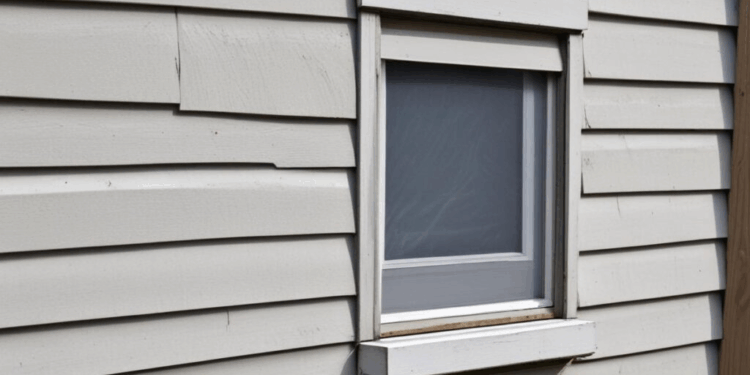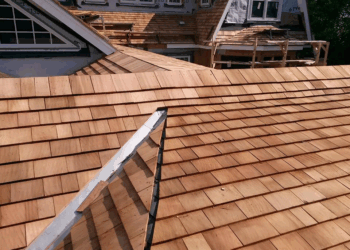
Delving into the world of asbestos siding, this article sheds light on its history, characteristics, and the impact of its use in construction. Prepare to be informed and intrigued as we explore this controversial building material.
As we navigate through the different aspects of asbestos siding, you will gain a comprehensive understanding of its significance and implications in the realm of construction.
Overview of Asbestos Siding
Asbestos siding is a type of exterior cladding material that was commonly used in construction during the mid-20th century. It was popular due to its durability, heat resistance, and fire-retardant properties. However, asbestos siding has since been phased out due to health concerns related to asbestos exposure.
Characteristics of Asbestos Siding
Asbestos siding is composed of asbestos fibers mixed with cement or other binding materials. It is known for its strength, resistance to weathering, and low maintenance requirements. Asbestos siding can be found in various colors and textures, mimicking the look of wood or shingles.
Benefits and Drawbacks of Using Asbestos Siding
- Benefits:
- Durability: Asbestos siding is long-lasting and can withstand harsh weather conditions.
- Fire Resistance: Asbestos siding is highly fire-retardant, making it a safe option for buildings.
- Low Maintenance: Asbestos siding requires minimal upkeep compared to other materials.
- Drawbacks:
- Health Risks: Asbestos fibers are known to cause serious respiratory illnesses, including mesothelioma, when inhaled.
- Regulatory Concerns: Asbestos siding is now heavily regulated or banned in many countries due to health risks.
- Deterioration: Over time, asbestos siding can deteriorate and release harmful fibers into the air.
Health Risks Associated with Asbestos Siding
Asbestos siding, while durable and fire-resistant, poses serious health risks due to the presence of asbestos fibers.
Potential Health Hazards
- Asbestos fibers can become airborne when asbestos siding is disturbed or damaged, such as during renovation or demolition.
- Inhalation of asbestos fibers can lead to serious respiratory issues such as asbestosis, lung cancer, and mesothelioma.
- Exposure to asbestos over a prolonged period can increase the risk of developing these asbestos-related diseases.
Release of Asbestos Fibers
- Weathering and aging of asbestos siding can cause the release of asbestos fibers into the air.
- Cutting, sanding, or drilling into asbestos siding without proper precautions can also release fibers into the environment.
- Improper removal or disposal of asbestos siding can lead to widespread contamination of the surrounding area.
Importance of Proper Maintenance or Removal
- Regular inspection and maintenance of asbestos siding can help prevent fiber release and reduce health risks.
- If removal is necessary, it should be done by trained professionals following strict safety guidelines to minimize exposure.
- Proper disposal of asbestos-containing materials is crucial to prevent further contamination and protect the health of individuals in the vicinity.
Regulations and Guidelines for Handling Asbestos Siding
Asbestos siding removal and disposal are highly regulated processes due to the health risks associated with asbestos exposure. It is crucial to follow strict guidelines to ensure the safety of both workers and the environment.
Regulations for Asbestos Siding Removal and Disposal
- Asbestos siding removal should only be carried out by certified professionals who have undergone specific training in handling asbestos-containing materials.
- Prior to removal, a thorough inspection must be conducted to assess the extent of asbestos contamination and determine the appropriate removal method.
- All local, state, and federal regulations regarding asbestos removal and disposal must be strictly adhered to, including proper containment and disposal procedures.
- After removal, the waste must be properly sealed in leak-tight containers and disposed of at approved hazardous waste disposal sites.
Safety Measures and Protective Gear
- When dealing with asbestos siding, workers must wear appropriate personal protective equipment (PPE) such as respirators, gloves, and coveralls to minimize exposure.
- Specialized tools and equipment should be used to minimize the release of asbestos fibers into the air during removal.
- Work areas should be properly sealed off to prevent the spread of asbestos dust and fibers to other parts of the building.
Professional Services for Asbestos Siding Removal
- There are professional asbestos removal companies that specialize in safely removing and disposing of asbestos siding from residential and commercial properties.
- These companies have the expertise, experience, and equipment necessary to handle asbestos removal projects of any size, ensuring compliance with all regulations and guidelines.
- Hiring a professional asbestos removal service can provide peace of mind knowing that the job will be done safely and efficiently, reducing the risk of exposure to asbestos fibers.
Alternatives to Asbestos Siding
When considering alternatives to asbestos siding, it is essential to evaluate modern siding materials that offer comparable benefits without the health risks associated with asbestos exposure.
Comparison of Modern Siding Materials
Modern siding materials like vinyl, fiber cement, and wood are popular alternatives to asbestos siding. These materials provide durability, versatility, and aesthetic appeal similar to asbestos siding but without the harmful health effects.
Environmental Impact
Using asbestos siding can have significant environmental consequences due to the release of asbestos fibers into the air during installation, maintenance, or removal. In contrast, modern siding materials are environmentally friendly and do not pose a threat to the ecosystem.
Popular Replacement Options
One popular replacement option for asbestos siding is fiber cement siding. Fiber cement offers durability, low maintenance, and resistance to fire and pests. Another popular choice is vinyl siding, known for its affordability, longevity, and variety of colors and styles.
Wood siding is also a classic option that provides a natural and timeless look for homes.
Conclusive Thoughts
In conclusion, the intricate details surrounding asbestos siding have been unveiled, highlighting the importance of awareness and proper handling. This discussion serves as a valuable resource for anyone dealing with or considering this once-popular building material.
Key Questions Answered
What are the health risks associated with asbestos siding?
Exposure to asbestos siding can lead to serious respiratory issues and even cancer. It is crucial to handle it with care and seek professional help for removal.
Are there safe alternatives to asbestos siding?
Yes, there are modern siding materials available that are safer and more environmentally friendly than asbestos. It’s recommended to explore these options for a healthier living environment.
What regulations govern the handling of asbestos siding?
There are strict regulations in place for the removal and disposal of asbestos siding to prevent health risks. It’s essential to follow these guidelines to ensure safety.














